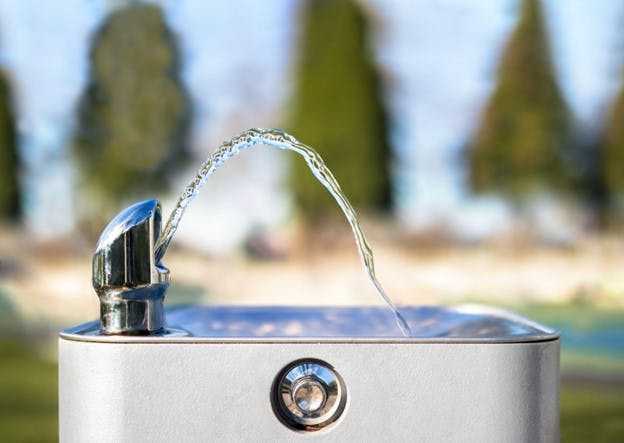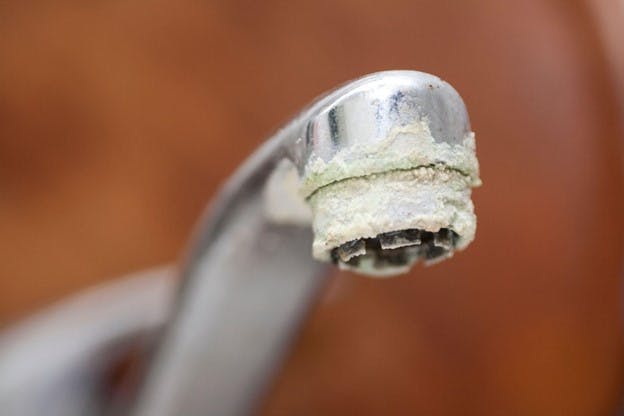🌟 New Arrival! Upgrade Your Water with Our Advanced Pitcher Filter. Shop Now
July 2023
A Wild Ride Though Orlando Water Quality: Should You Drink It?
Even though it’s far from either Florida coast, the city of Orlando is still covered in water. With over 100 lakes, this land that was once dominated by swamps and marsh is now a thriving urban oasis.
Orlando’s ability to attract great artists, entertainers, engineers, and other talents has led to it becoming a fast-growing tech hub. The city is pushing forward optics, aerospace, gaming, autonomous vehicles, advanced manufacturing, simulations, and logistics while its population is growing at a staggering pace.
Given Orlando’s rapid growth of industry and population, maintaining good water quality is a top concern for “The City Beautiful”. And with climate change knocking on Central Florida’s door, there are plenty of challenges now facing it. Droughts are limiting the city’s access to water and presenting new problems when it comes to maintaining quality.
In this article, we’re going to examine some of the issues affecting Orlando water quality, look at some of the ways the city is working to handle it, and figure out what, if anything, you should be doing to protect your home’s water.
Where Does Orlando Water Come From?
Like so many other cities in Florida, Orlando gets its water from the Lower Floridan aquifer. This aquifer is part of an impressive aquifer system that stretches underground for over 100,000 square miles. Not only does it stretch under the entire state of Florida, but these historically artesian aquifers even extend into Georgia, Alabama, and South Carolina.
The Floridan aquifer is rain fed and much of the water is naturally filtered by hundreds of feet of sand and rocks. The water is pulled up from wells as deep as one quarter of a mile below ground before being sent to various treatment facilities. Water in Orlando is supplied by both the Orlando Utilities Commission (OUC) and Orange County Utilities, depending on which service area you’re in.
How Is Orlando Water Quality?
Orlando water quality is a mixed bag. The Lower Floridan aquifer is a fantastic source for clean water and the city is covered in freshwater lakes. At the same time, climate change, pollution, and population growth are taxing their water systems greatly.
While not specifically an Orlando problem, Florida ranks first in the nation when it comes to impaired freshwater bodies. Much of it is due to storm water runoff, fertilizers, and sewage.
Not only do you not want to swim in or eat fish from a lake filled with chemicals and feces, but the algae blooms remove so much oxygen from the water that nothing but the algae can live in them.
Orlando is no exception. The city’s wastewater system has been plagued by regular failures over the past 5 years. It has discharged millions of gallons of raw sewage into wetlands and onto the city streets and has been doing it for years.
Storms have taxed the waste water system while droughts have the city scrambling to conserve water and find new source water.
Unlike other Florida cities like Miami[1] , whose drinking water quality is more directly affected by salt water and surface pollution, Orlando’s drinking water supply is pulled from a quarter of a mile below the surface of the earth. This provides a layer of protection from what goes on above. While the land of 100 lakes needs to find more water sources to sustain itself, the water it currently uses is very high quality.
On top of that, Orlando uses ozone filtration methods which allow them to remove many contaminants while using fewer chemical disinfectants like chlorine and chloramines. The OUC also does water quality testing[2] three times more than is legally required of them.
link miami water quality
link water testing article
Is the Water Safe to Drink in Orlando?
Generally, tap water in Orlando is considered safe to drink by EPA standards. Since the passage of the Safe Drinking Water Act in 1974, the U.S. Environmental Protection Agency has set the standard for public water utilities throughout the country. They do this by putting enforceable limits on about 90 different contaminants and requiring a minimum amount of water testing and reporting that is made public once per year.
While this has improved our drinking water quality across the U.S., it's not a perfect system. There are thousands of potential contaminants we don’t know enough about that are not being regulated. As we continue to learn more about certain contaminants, regulations can be changed. These changes have to align with not just health benefits of removal, but also the economics of testing for them and removing them.
No regulations currently exist to monitor Microplastics — even though we know they are there.
Governments can also be slow to move on new information. Water watchdog groups like the Environmental Working Group (EWG), who claim to track the latest science, point out that even though our understanding of many contaminants has evolved, the EPA hasn’t changed an enforceable limit on any contaminant in almost 20 years.
According to the EWG, many regulated contaminants have legal limits that are far higher than what modern science suggests is healthy. Let’s look at how Orlando water quality does when put up against these standards.
What Contaminants Are Hurting Orlando Water Quality?
Because of Orlando’s deep groundwater supply and the use of some nonchemical water treatment methods, the city’s water has lower contaminant levels than some of their peers. That doesn’t mean there aren’t problems though. Orlando water quality is particularly affected by high concentrations of these five water contaminants.
Haloacetic Acids (HAA5)
HAA5 is made up of five haloacetic acids: monochloroacetic acid, dichloroacetic acid, trichloroacetic acid, monobromoacetic acid, and dibromoacetic acid. These chemicals are known as disinfectant byproducts, as they result from disinfectants like chlorine interacting with organic matter in water. Long-term exposure to HAA5 can lead to cancer.
Levels of HAA5 in Orlando water have exceeded what the EWG recommends for safety by 192 times:
- EPA maximum allowance: 60 parts per billion (ppb)
- EWG recommended maximum: 0.1 ppb
- Orlando maximum contaminant level: 19.2 ppb
Haloacetic Acids (HAA9)
HAA9 includes all of the contaminants from HAA5 but adds bromochloroacetic acid, bromodichloroacetic acid, chlorodibromoacetic acid, and tribromoacetic acid. These are also disinfectant byproducts and are also cancer-causing.
Levels of HAA9 in Orlando water have exceeded what the EWG recommends for safety by 544 times:
- EPA maximum allowance: No legal limit
- EWG recommended maximum: 0.06 ppb
- Orlando maximum contaminant level: 32.7 ppb
Total Trihalomethanes (TTHMs)
TTHMs — like the haloacetic acids above — are formed when chlorine interacts with organic compounds in drinking water. They’re also known to be carcinogenic. This category is made up of four chemicals: chloroform, bromodichloromethane, dibromochloromethane, and bromoform.
Levels of TTHMs in Orlando water have exceeded what the EWG recommends for safety by 384 times:
- EPA maximum allowance: 80 ppb
- EWG recommended maximum: 0.15 ppb
- Orlando maximum contaminant level: 57.6 ppb
Chromium (Hexavalent)
Chromium is another common contaminant found in U.S. water supplies. It can occur naturally but is also an industrial pollutant. Although it’s known to be a carcinogen, this contaminant is still unregulated by the EPA.
Chromium levels in Orlando water have exceeded what the EWG recommends for safety by 2.3 times:
- EPA maximum allowance: No legal limit
- EWG recommended maximum: 0.02 ppb
- Orlando maximum detected level: 0.0456 ppb
1,3-Butadiene
1,3-Butadiene is a very uncommon contaminant to be found in U.S. water supplies. Across the country, this industrial pollutant has actually only been detected in Orlando water. This may be why this known carcinogen remains unregulated by the EPA.
Chromium levels in Orlando water have exceeded what the EWG recommends for safety by 2.2 times:
- EPA maximum allowance: No legal limit
- EWG recommended maximum: 0.0103 ppb
- Orlando maximum detected level: 0.0229 ppb
Does Orlando Have Hard Water?
Like the rest of Florida, Orlando is known to have hard water. Hard water means the water contains a high concentration of hard water minerals like calcium and magnesium.
Typically, as water travels through rocks and dirt, it dissolves these minerals and carries them along for the ride. While these minerals are safe to drink, you could imagine that having your water full of tiny rock particles could be damaging to your pipes, surfaces, and water-using appliances.
If you’re dealing with hard water, adding a traditional water softener or a salt-free water conditioner to your water filtration system will be life changing, especially if you do a lot of cleaning.
Does Orlando Water Have Lead in It?
Orlando water may have some lead in it. Some of that could be leached from plumbing and water service lines.
Lead is considered a neurotoxin and there is no safe level of lead exposure, according to the CDC. It is especially dangerous to children and pregnant women. While Orlando does add chemicals to the water to coat your pipes and prevent leaching, the OUC still recommends you flush your pipes (run your tap) by running your water for 30 seconds if your faucet has been dormant for one hour or more. They also recommend you only use cold water from your faucet to drink or cook with.
Lead is easily filtered out by all of HomeWater’s whole house and under-counter water filter models.
Is Orlando Water Fluoridated?
Orlando does add fluoride to their water as a public health initiative. Fluoride is known to protect teeth from dental caries. Not everyone wants to have fluoride added to their water though. It is important to know that while you can remove fluoride from your water, not all water filters will do it. In order to remove fluoride from your water, you’ll need to use a reverse osmosis system.
Can You Drink Disney Hotel Tap Water?
Yes, you can drink the tap water at Disney hotels. While the water may have a different taste than you are used to, it is considered safe to drink and it will save you a lot of money over bottled water in the theme parks.
How Can You Get the Best-Tasting Water While Living in Orlando?
Orlando is known for its theme parks and thriving creative and tech scenes. As a fast-growing city dealing with climate change and pollution, the demand for high-quality water will only grow.
If you have concerns about Orlando water quality or just want to make sure you have access to great tasting water right from your tap, HomeWater can help.
Our UPSTREAM 4-Stage Whole Home Water Filter will deliver refreshingly clean water to every faucet in your home. It will remove contaminants like dirt, rust, chlorine, DPBs, heavy metals, PFOS, microorganisms, and more. Add a water softener to get rid of that hard Central Florida water for good.
With our HomeWater 4-Stage Reverse Osmosis Under Counter Water Filter, you’ll never feel the need to buy bottled water ever again. Reduce lead, fluoride, and VOCs like 1,3-butadiene for the best water quality you can get in Orlando.
With HomeWater, you can get high-quality water from every tap in your home.


